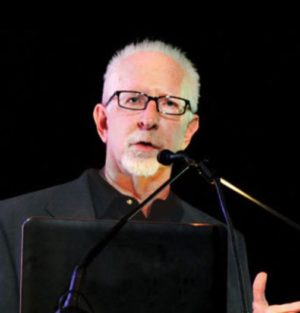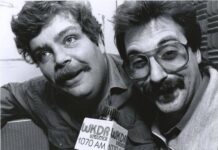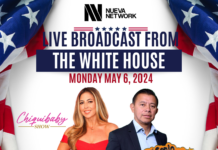
(By Fred Jacobs) First of all, I’m honored so many radio industry luminaries were moved enough by this year’s Techsurvey 2022 to share their thoughts in Radio Ink these past two weeks. David Santrella, Joel Oxley, Mike McVay, Buzz Knight, Ed Levine, Bud Walters, Alan Burns, and Lee Abrams are industry icons I admire, have worked with, and in some cases, competed against.
I read all their comments, observations, and action plans with great interest. They are all excessively smart people whose experiences have run the gamut. They’ve all enjoyed incredible success, they’ve taken a few lumps along the way, and they all have vivid memories about a radio industry that was much different than the one we’re working in today.
This is the 18th year Jacobs Media has produced an industry-wide Techsurvey. About a decade ago, we hit on the idea of format breakouts, and there are 14 formats we show every year. Unlike the Infinite Dial that is a measure of the country and how its populace uses media, our study focuses on core radio listeners, the people who join station email clubs.
In my presentations I describe our sample as “the 20” in “The 80:20 Rule” – those who generally profile as habitual listeners. When you understand how they use broadcast radio and other media, you have a clearer view of where broadcast radio in the U.S. actually stands. After all, if our sample of mostly radio fans are pointing to radio weakness, what does that tell us about the broader audience?
And that’s what I saw when our research director, Jason Hollins, started sharing Excel spreadsheets with me in late February. Techsurvey’s annual tracking speaks volumes about the state of AM/FM radio. And this year, I saw those stress cracks growing.
Overall listening continues to tick down. You can blame COVID all you like, but the trend was in progress pre-pandemic. Yes, in-car listening isn’t back to 2019 levels. But even when people are on four wheels, the amount of broadcast radio they’re consuming is decreasing – like an oil leak.
Radio’s in-car status is paramount to its success, a fact radio people can agree on. And we hit a record high this year of consumers who are able to connect their smartphones to their cars. Eight in ten are now able to do so.
We also learned three in ten drive a truly connected car with a system like Ford Sync or Chrysler Uconnect. And we know when folks drive these vehicles, they spend less of their in-car time on AM/FM radio stations. The days of two knobs and six radio station presets in the center of the dashboard are over.
These are just a few of the facts that guided my initial Techsurvey observations this year, much to the chagrin of many radio pros who wish the industry was doing better. The march of technology that began in the 1990’s is unstoppable. It has eroded broadcast radio’s strength and dominance. It has also all but eliminated radio’s swagger.
Unfortunately, many radio executives and managers have spent years suffering from digital denial. Some still suffer its effects today. The tropes are familiar: radio survived television, MTV, and other technology challenges – it will similarly come out stronger in the Internet Age. Or: despite the growth of streaming, mobile devices, smart speakers, podcasts, video streaming, social media, and other tech incursions, 90-odd percent of Americans still tune in AM/FM radio each week.
The industry’s embrace of many of these technologies has been tardy, to put it kindly. At various points on the curve, broadcasters have had the opportunity to buy tech companies or start up their own. But for years, most stayed pat, content to duke it out with other radio stations for market share and revenue. Some actually prayed the Internet would turn out to be a tech fad that would simply fade away. The data has suggested otherwise, and that’s why studies like Techsurvey are so important so we can all look at the same trendlines.
One of the key findings in this year’s Techsurvey has received little coverage, but I think it speaks to radio’s lack of awareness about who IS the competition. A new question simply asked respondents to tell us their first choice destination when they’re in the mood for content similar to what the station that sent them the survey provides.
Of course, the “right answer” is to choose that same station. But only about three in four made that choice. The rest fanned out, selecting other terrestrial stations, satellite radio, digital streaming platforms, and podcasts.
We’ll know next winter when Techsurvey 2023 is conducted whether broadcast stations are, in fact, losing ground to these competitive forces.
The moral of the story is that broadcast radio now competes for time and attention with everybody. But you’d never know it by how stations conduct research and how many of them sound. Almost all efforts are directed at beating other stations in the market for ratings…and revenue. Most sales departments are competing for a diminishing reservoir of “radio dollars” – not a good plan for the future.
But Techsurvey 2022 isn’t about pointing out radio’s weakness or predicting its demise. Yes, there are troubling signs for AM/FM radio in the data. But there are also clear and obvious pathways for improvement, and ways for broadcasters to optimize the medium’s inherent and historic strengths.
The data clearly shows how personalities have become more important to many people than the music. Let’s stop laying them off, and let’s start training them to be better communicators and entertainers.
The values of being local and feeling connected are foundations many stations can build on. We’re seeing some growth in these areas since COVID, not surprising when you think about the emotional state of the country. Great radio stations lean into those strengths. They are values and benefits digital competitors cannot easily provide.
That’s a key point. Techsurvey identifies the expanded competitive landscape terrestrial radio stations now face. Broadcasters need to identify how they can differentiate themselves from digital brands, satellite radio, and podcasts. What can radio provide that is truly meaningful and unique? How can broadcasters use their digital assets to enhance its terrestrial value?
It means radio broadcasters need to work harder on their strategic plans, and invest in research, personnel, and other resources that contribute to fighting a different war. This isn’t about winning a monthly in the ratings. It is about understanding how consumers now use media, access content, and what they value.
The data suggest to me that many radio broadcasters will have to level up to stay competitive. Radio needs to look and sound better. They are not simple fixes. They require discipline, sacrifice, attention to detail, and stellar execution – characteristics that have been in short supply over the past couple of decades.
The point is that good enough is no longer good enough. Consumers expect more from their media. If broadcast radio can deliver, there is every reason to believe it can improve its current position.
And that’s been my premise all along – in Techsurvey, our blog, the DASH Conferences we did with Radio Ink, and our CES tours. Radio has to do better. It no longer operates in a vacuum. It’s on the big stage with the panorama of media content. The public demands great experiences from every medium it accesses. That’s the mindset radio companies need to adopt.
The value of Techsurvey isn’t about walking around holding a sign that reads “The end is near.” I’m not the angel of doom. But if at times I can serve as an agent of change, then I’m using the data and my position in the industry for positive purposes.
I am making numerous presentations of this year’s survey to media companies, and at conferences and industry gatherings. I’m happy to do so.
Radio broadcasting is an industry in dire need of more and better research. If these studies can answer key questions, settle disputes, and help industry leaders navigate the future, I’ve done my job.
Thanks, Radio Ink, for the opportunity to discuss these important issues.
Fred Jacobs can be reached by e-mail at [email protected]
Check out our entire series here:
Day One – Steve Smith, Mike McVay, Nate Deaton
Day Two – David Santrella, Joel Oxley, Ed Levine
Day Three- Bud Walters, Lee Abrams, Alan Burns
Day Four – Nick Martin
Day Five – Vince Benedetto, Sean Bos and Buzz Knight






Agree with what you say.
Erica:
Agreed…My Alexa provides me the perfect morning station: RTE LYRIC FM from Limerick Ireland right in Downers Grove, Il. I prefer serious music but I find WFMT, frankly, boring.
My career was spent in sales and sales management and market strategy. I cut my teeth selling intangibles via broadcast sales so I look at my first love (radio) from the perspective of a very broad horizon. Instead of saying radio, let’s think in terms of sales channels and target markets. I could go on…
We know the issues, they’re discussed every day. We know the solutions, they’re discussed here every day. As long as media companies are obsessed with executive compensation, debt servicing, and eliminating “costs” (people) as much as possible, we’ll be chasing our tails. It’s saddening-and frustrating. But we gotta keep up the fight. Will we ever see the discipline, sacrifice, attention to detail, and stellar execution – characteristics that have been in short supply over the past couple of decades? If there’s a glimmer of that we’ll notice it.
We know the issues, they’re discussed every day. We know the solutions, they’re discussed here every day. As long as media companies are obsessed with executive compensation, debt servicing, and eliminating “costs” (people) as much as possible, we’ll be chasing our tails. It’s saddening-and frustrating. But we gotta keep up the fight. Will we ever see the discipline, sacrifice, attention to detail, and stellar execution – characteristics that have been in short supply over the past couple of decades? If there’s a glimmer of that in the near future please let me know.
The first step should be putting music and radio enthusiasts back into Station and Op Manager roles. Salespeople as Station Managers is what got you here… put them back out on the road selling air, where they belong.
Your prime content is Music. Quit putting people in key positions who have little to no interest in music.
Live and local may be the winning combination to differentiate radio from all of the other audio services noise, but even on the radio dial there is too much competition and insufficient dollars to share for local advertising. It started back in the docket 80-90 days when the FM band began to get cluttered. For radio to excel it needs fewer on air signals so there will be more money for remaining stations to fund great air talent, real newsrooms and fewer commercials per hour. Otherwise, I see no way for radio to compete for listeners in the digital age.
Waiting for another great global economic depression to arrive so our audience will once again appreciate free OTA broadcasting versus paying for Internet or wireless cellular connectivity is a fools errand.
If somehow there were fewer radio stations on the FM dial again, does anyone actually think that many of the operators would invest that new found money in a bigger and better air staff? Or, would they just put the bonanza in their pocket and continue on their merry way? I’m casting my vote from what I’ve seen for #2.
Radio, please don’t change anything. Your fear has been our opportunity.
-Spotify
-Apple
-TouTube
-Tik Tok
As always, very well said Fred. I have often thought that if AM/FM radio does ultimately fail it will largely be because of self inflicted wounds. It would be nice if some in the position to do so would wake up and commit to playing to the strengths we still have.
It’s almost as if the larger broadcasters are doubling down on what’s driving the listeners away in the face of the internet/connected age. I’m in the listening area of a market with IHeart, Alpha and Summit as the big players. I’ve clocked six minute breaks on ALL of them. and out of the around 20 staions they own together, a total of five of the stations have a live morning drive show.
Why should I sit through 24 minutes of commercials when I can get the traffic and weather on my phone now using Pandora to listen to the music I want to hear without the awful morning show garbage?
6 minute breaks? Try 8 or 9 minute breaks, on many iHeart stations as well as Audacy and Beasley stations.
Many people don’t seem to realize…the iHearts of the radio industry could care less. Their focus is executive compensation, debt servicing, and eliminating “costs” (people) as much as possible. There is zero innovation, zero concern about a quality local product. Not even on their radar.
All the good ideas on here, mean absolutely nothing to the Pittmans of the corporate radio world. To them, spending money on local promotions, hiring and investing in local talent and those types of things are unnecessary cost items. They think they can fool the listeners with voice tracking, national promotions, and other schlock gimmicks.
At least I Heart has invested in a profitable digital portfolio. The other’s just don’t get it. the Beasley B-Pod channels were a massive failure because they made their DJ’s do podcasts, which is a horrible idea. Beasley has Dom Theodore coach talent to do the same boring games in all of their markets and that hardly translates into engaging podcasts conversations. Audacy is flat broke because they give away their commercials for pennies on the dollar. But overall your point is valid because they mostly don’t care and the product really shows.
All of us at Amazon Music adore broadcast radio’s perpetual denial that we, Spotify, Apple Music & YouTube Music are having you for lunch.